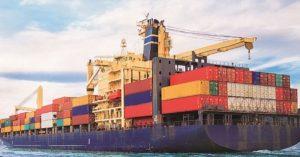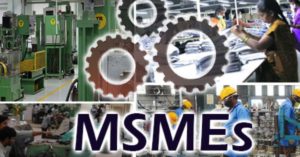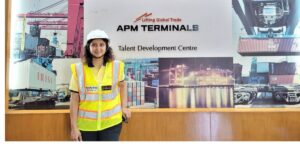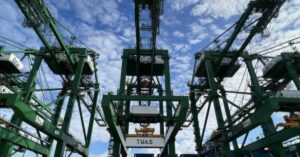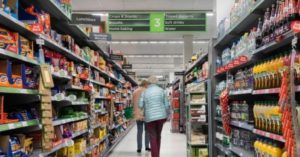“Going forward, more digitalization will come in. Resilience has become a very major part of the supply chain, even beyond cost. With the global play as it is happening now, country-cenetred supply chains will start to become more efficient,” predicts Jasjit Sethi, CEO, TCI Supply Chain Solutions.
Let me begin with the most recent development on the logistics landscape. Honourable Prime Minister released the National Logistics Policy. So, what are the key transformational changes that this policy can bring to our industry?
I think it’s a very welcome step because it has put logistics in the forefront and that has not been recognized so well. It talks also about promoting different modes. So, as of now, it is more of a thought process under PM Gati Shaktiinitiatives. It talks of the deliverables, that where we are now and where we need to go? How we will get there and some of the pieces, we will probably iron out as we go. This has got a lot of tools around it, which is called the tools for planning, decision making, engagement of the states, and also the digital framework. But having said that I think it is still early days for us to look at the benefits right away. The public private participation is going to be very important and how all the modes come together? We have so far had road versus rail before the multimodal word came in. Coastal shipping is still isolated and not so much part of the mainframe and other modes like air have been very expensive to use and only constrained to probably the couriers. So, with all that in mind, we did not have proper interchanges. For example, the Multimodal Logistics Parks (MMLPs). Probably, Concor was the first company to start setting upthose MMLPs, but those were mostly rail-based, and not so much of road and railways combination. The first such combination is yet to come in. So, once those start coming in the interchanges between road and rail, they become better and we have warehousing at the same premises. That will make logistics much more efficient. It’s a great step forward but as of now, we are yet to get the fruits of it as you very well know.
Out of the many aspects of the policy, let us focus on technology and digitalization, which you are also very passionate about it. So, can you give me an insight into how TCI is leveraging on these technologies?
I think what has been the fundamental change, actually before this policy is the e-Way Bill after GST. So, the e-Way Bill is a phenomenal thing and many countries like even Europe could not do that what India was able to, that every invoice going out was tracked to electronic way bill and earlier, it was much maligned, but after GST this came across to be complete digital; no paper was required to be carried, and yes there have been glitches which would happen at such a scale but by and large, it has been phenomenal in terms of data and information it carries. So, the GST is the basis of the e-Way Bill as you are well aware. So, the methodology for tracking an e-Way Bill is that the GST portal has a GSP and then you have an ASP under that and that ASP feeds company with the information. Since it came in, we did not feel the need for an ASP and that will link with the GSP. So, every e-Way Bill made on any of our GST codes, and we have got 70 of them across all the companies, we are aware of it and we track each of them electronically. We exchange them electronically in terms of when they are about to be due; due for today and due for tomorrow as well. Any exigencywhich we have, we paste on that. So far for us, it has become very much part of our control tower dashboard. So, we have a dashboard on the e-Way Bill as well and it has helped us in terms of controlling the possible leakages – why a shipment has not been arriving on time? It has been a great help. The part which we do and which the government doesn’t has yet is the GPS. So, we link our trucks’ GPS with that e-Way Bill and that is how it gets managedin terms of when it arrives, so we close the e-Way Bill. It has now arrived there, so e-Way Bill is now closed in our records.
Can we talk a little bit about TCI business. How it has been during the Covid and post-Covid?
I think during Covid, for us, it was more of a service, and 23rd of March was the lockdown in 2020. We worked with the government and had a logistics policy for essential goods out by 25th and once we were up and running again, the warehouses which catered to food…that never stopped throughout the Covid, and essential cargo started to come in, then we increased that overall essential cargo in two things. For example, packaging was not part of the food process… we got that also as a part of it and we have been walking alongside the entire first wave of Covid. When the second wave came, we were far better prepared and at that time the issue of oxygen supply had come up. So, fortunately we did about 7000 tonnes of oxygen to Delhi in the month of April and May, during the Delta wave. So, while this has been more of a service but it also helped our business and we grew in that year as well and the last year also. This year, our growth has been far better because last year, again the market was slow because machines were closed. So, growth has been pretty fine but I find kind of an A-shapedrecovery. Some sectors which are probably automobiles and consumer durables, are really going up really well, and the higher-end televisions or refrigerators are just flying off the shelves, but the lower end of the pyramid, the brown goods,the 2-wheelers for mobility, they are not going well. During Covid, I took two road trips. One road trip, I took to Bombay, from Delhi and second, I took towards Kolkata. That was because airlines were not running in the first wave and second, it was again sketchy. So, just to meet people, see how things are happening. What I could see in the second wave, just post Delta wave, is that bottom of the pyramid, the MSMEs and other employees, they have a demand for 2-wheelers, they have a demand for goods but they don’t have the right profile anymore to get lending, they don’t have the money to buy things. So, demand is there but affordability has gone down. So, I could actually see…this is in UP and Bihar, these parts…more pronounced, where you could feel that the lower end of the pyramid which is the lower middle class, that has taken a big hit, in terms of their finances during the Covid. So, while we are growing, we still feel that the bottom of the pyramid is not being able to afford, might at some point start impacting the overall economy. So, that is our take on this as of now and this year, we are talking about 30% growth is there in the first 6 months and let’s see where we end up in this year but it should be a very handsome growth to put.
TCI is into warehousing, multimodal logistics parks, cold chain. So, what kind of infrastructure you have currently and what is the hinterland that you are serving?
So, in terms of the infra, first of all it is a network of own offices. We have 1400 and they are across all districts – 2 to 3 in a district. So, we have one in Leh and in Ladakh. We also have Port Blair, we also have in Agartala andBhuj for example. That is covered. We have about 1800own trucks, which we move…mostly specialized trucks, within the country and we also have access to about 6000 vendor partners who are dedicated to us either on 2-way or 1-way. We operate trains, both as TCI itself and also as joint venture with Concor, TCI-Concor. Average we do about 200 trains a month. So, last year we did about 1400 trains. This month we should be clocking 2000 plus trains, and these are full rakes. One rake could be 25 bogeys to 45 bogeys. This could be for automobiles or containers as well and also for general goods. We also run 6 ships — 3 on the West Coast and 3 on the East Coast. These are coastal vessels. They operate on Mundra, Kandla to Cochin circuit and then Chennai to Port Blair circuit, and to facilitate all this, we have about 52 yards for different kinds of cargo and about 85 warehouses, altogether more than 30 million square feetof space which we manage. This is all conducted through own network. We have our own private cloud and all these are connected through our data servers with a high availability, also based out of India in a different location. We also have our mobile apps, which enable anybody in the field to do all the transactions, including the transaction on-the-go as well. So, we can do a transaction on a rake in terms of using the data of GPS and 4G to do a transaction without having to go to a laptop or to a PC to complete a transaction.This is all real time and we also were able to shift to a new system for attendance during Covid because biometric had to stop. So, we have a proximity-based system, where if I have come to office, I can mark my present only if I am in the periphery of my office and that is for all our workers. So, once they are inside the premises, they can mark a present. All these are also linked with about 12 questions list people have in case they have any symptoms of Covid. So, we have kept ourselves safe as well along with that. We lost about 8 people in the 2 waves of Covid.
Covid was not the only challenge that we have faced. Now, we see the Russia-Ukraine war still continuing, and oil prices have shot up. Even freight rates have gone up and now we are talking about globally inflationary trends. So, how is it affecting the demand in the market, especially for the exports and have any of these trends impacted TCI?
Since we are growing, we don’t see a direct impact. But what impact we do see is that first impact which we had was of the fuel price increasing. Second, some of the metals and minerals that impacted the supply chain for automobiles, like Nickel and others, that impact is there. Going forward, we feel the impact of gas prices going up in Europe, especially during the winters…will have an impact on India as well. The overall impact of the war in terms of the food chain, food grains, was seeming to be positive on India initially. Now it is neutral. We believe that this conflict has alsopolarized the world and while India is a mostly domestic-centred economy and we are also mostly centred. But these impacts of less globalization are not good and we can see that our exports are reducing. It is an opportunity for us also of ‘Make In India’ but we need to also have ‘Make In India’ for the world. So, that impact I think initially it is there but if you look at the polarization, probably India will gain from what China has lost, and if we are able to get our quality and cost together, probably India would have a good opportunity emerging out of the polarization because diplomatically we have kept ourselves very nicely neutral and that I think is a very big positive for trade. The political alignmenthas to be first and then comes economic alignment.
One catchphrase we talk about is multimodal logistics. The industry as well as the government want to promote multimodal logistics, but we don’t see it really happening in the true sense. So, as an academician, as a theoretician, and also as an industry practitioner, what do you think of the reasons that we are not able to be ground this complete multimodal logistics system?
I will differa little bit on that. During the first phase of Covid, what happened was that the passenger trains stopped, and even there was shortage of drivers initially. So, railway came to the front and we had unimaginable transit times. Delhi to Chennai is 40 to 45 hours. Maybe from Ahmedabad to Agartala in 60 hours. Now, what this did was, it moved traffic from road to rail, and then when things became normal, it became road and rail. So, it is not road versus rail and you know, our belief goes back to the year 2008 – 2009, when we and Concor got together and said why don’t the largest come in logistics domestic transportation and in trains get together to offer customer end-to-end, and whatever work we do along with Concor in the joint venture, that is to make things on an end-to-end basis and that has been a success story, and the same is replicated in other cargo as well. Today, hub and spokehas become quite popular in automobiles also. You will be surprised to know that today we movealot of tractors and cars also by train and then put them in the yard and then distribute them. So, we do 70 to 80 trains to 100 trains every month only for these goods. So, there is a lot of traction of multimodal as a mass movement.I didn’t mention that we also own 3 trains double decked, which carry about 270 cars in one shot and that also enables us to live the story of multimodal. Railway has also come forward and from this April, they are giving green points. So, as you know that ESG is very important for corporates. So, these green points go a long way in satisfying the green point requirement of any corporate. So, multimodal is happening now, it is happening far more than earlier and the MMLPs, when they come up, we seek to go up very substantially but one thing which could probably derail is that again the transit times are going up in railway because passenger trains are back now. So, the dedicated freight corridor is required. When there were no passenger trains, everything was a DFC. Now, it is no longer so.
I understand that at the National Logistics Excellence Awards, TCI has won best warehouse service provider, best cold chain refrigerator service provider. Congratulations on these achievements, but tell us what made you win these …what is the USP or what is the success behind winning these kind of awards?
For warehousing, you know, India began as godown management where things were kept wherever they could be dumped. There was nothing like first-in, first-out; there was no location. We started looking first at the block storage, started looking at doing basic barcoding. Then went to vertical warehouses. So, today we talk more of the cube of the warehouseand not the square footage. We started to put our own WMS systems into place and what began as a B2B business (business to business) then became as a B2C. We used to manage some of the largest warehouses of the e-commerce giants. We have done many of our own processes and systems in warehousing as well. Whatever learnings we have had from our global trips, which is about 60 facilitiesacross Europe and the US and the Asia-Pacific, in terms of the efficiency and productivity of a Western country, at the cost ofwhat India can afford, we are able to come up with efficiencies of cost per unit that is probably the best in class. Along with this, when we intermesh operations, which is processes, people and infra together, into a good building, which is safe and where people who are MBAs can also work in terms of work environment, climate and safety, what we get is that the warehouses actually are enablers for commerce to happen and the service levels have been going up and up and up. From cut off time of 4 PM, cut off time of 12 to 4, to 4 hours delivery, those kind of windows, that all has happened because of information technology also being part of that.
Cold chain is something we have been walking alongside for many years. We began in 2002 actually to start to look at the industry for working alongside for about 6 years. Then, we felt that right now, quality is still not coming in. Gave a break for a few years. In 2014we again picked up the pieces and felt that now with FDA being there, with FSI being there, quality is going to be important and incorporatedthat vertical and hived it off as a separate company in 2018. So, when we hived it off, already it had lot of knowledge and learning behind it. We also got a joint venture partner in that who’s a global major. That helped us in terms of higher quality and today, in cold chain, while we are not the largest, but in terms of quality, we are emerging quite well.
Are you looking at any fresh investments or expansion?
That is on as we speak, both in terms of the warehouses, yards and therolling stock. So, in case of rolling stock, we did not invest into any trucks for the last couple of years. It is happening now; already we have done a lot of that…investing into trains. We are also investing into tanktainers – carrying liquids in stainless steel containers. That also is a business in chemicals which we are working on. We are also investing into cleaning centres for that. So, lot of stuff is going on in terms of building infra for that particular vertical.
Let us do some crystal gazing. Now, we are at the last quarter of the calendar year. So, what do you think will be changes or trends in logistics and supply chain, maybe in 2023? I think logistics has become very much matured and Covid has helped people also rejig supply chains. This is for our customers as well. There have been some global shocks of high container rates and people have started to look at alternate flowsas well because the rates which went up during the last 18-20 month period were the level of 3x to 4x also. With all that backdrop, I believe now there is more digitalization which is coming in. People are looking at supply chain de-risking. Resilience has become a very major part of supply chain. Cost, while they are important, are not as important as quality and resilience, that is our understanding. With the global play as it is happening now, we feel country-centred supply chains will start to become more efficient and stronger and the ports and the intercontinental movement and flows will settle down in the next year because whatever flow has got disrupted by the “notbuying from China”…that will start to settle in now and the new alliancewill start to get formalized. We believe 2023 should be a stable year as of now. Again, difficult to predict anything but it should bea stable year because we have had a lot of learning, lot of shocks in the last couple of years and I think the industry per se largely has become far more stronger and wiser than it was earlier.



